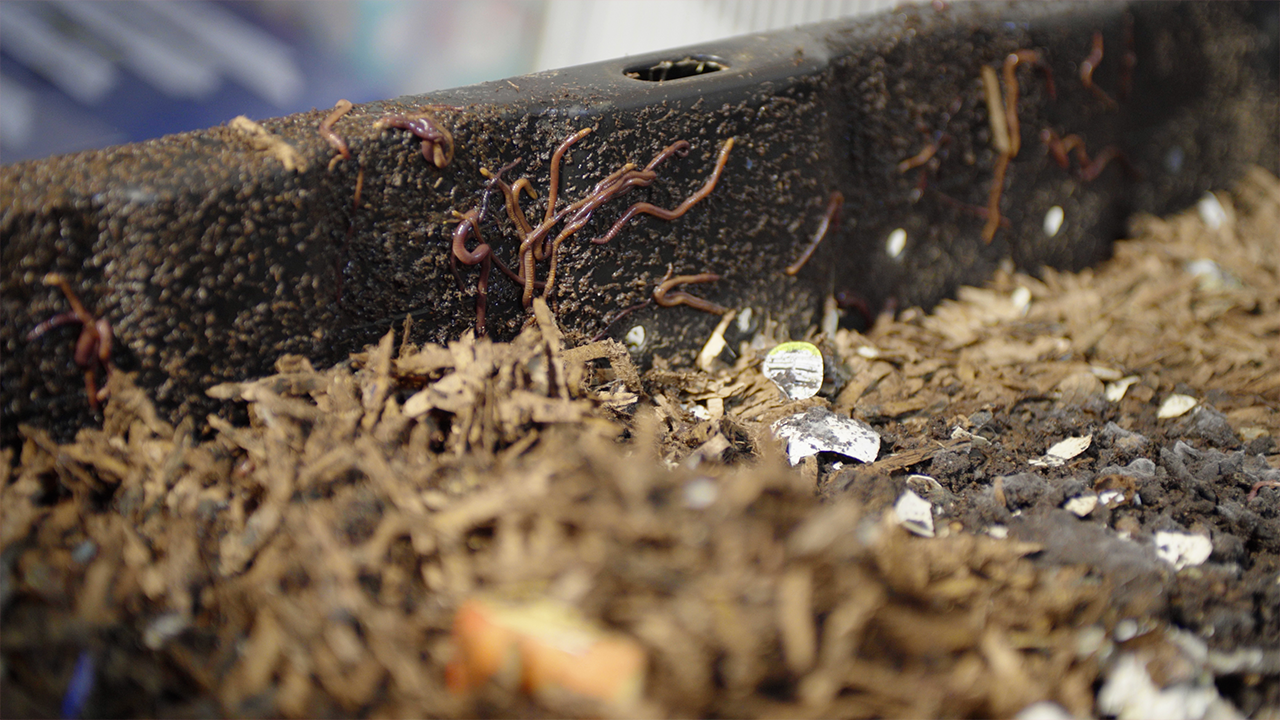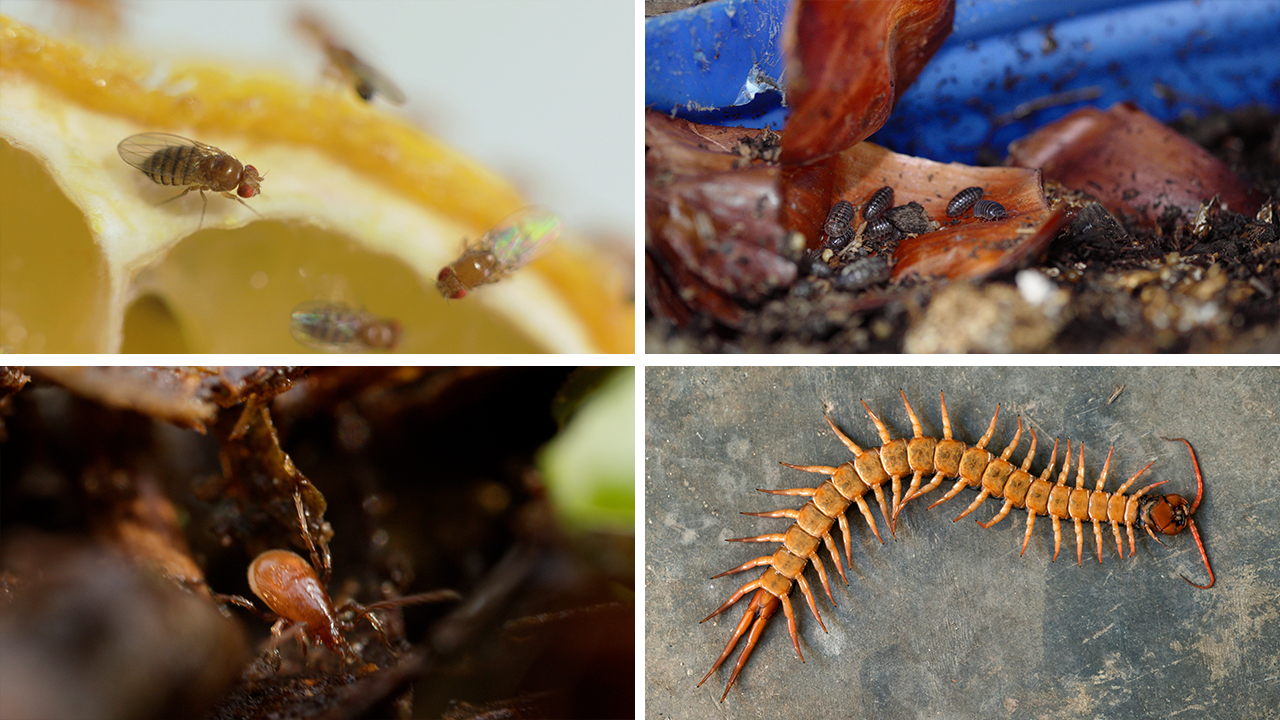Troubleshooting Your Worm Bin
As living creatures go, worms are pretty easy to take care of. But there are some common problems that new vermicomposters can have in their bins. They range from annoying, to potentially deadly for your worms. Thankfully they are all easy to identify and (relatively) easy to fix. Here’s the most common problems and how to fix them:
What’s that smell?
If your worm bin starts to smell, then it is time for some troubleshooting.
A healthy, well-kept worm bin shouldn’t smell beyond a vague earthy aroma when you open the cover.
But sometimes worm bins can develop strong odors, which are a sign of a problem. If your bin smells like rotting food, then dig around inside to see if there is in-fact rotting food in there. If there is, you’re feeding your worms too much because your worms should be eating all the food before it gets to the stinky rotting stage. If you find rotten food in your bin, take it out and then add more shredded cardboard to the bin. You’ll need to really fluff it through the soil well. It’s messy, but just dumping fresh cardboard on top isn’t going to address the problem. Once the rotting food is out and the new cardboard is mixed in, the smell should go away in a couple of hours. To prevent it from happening again, cut back on how much food you’re feeding your worms going forward.
Another odor you could get is a vomit or sewage smell. I know, gross. These odors are signs that your bin has gone anaerobic, which means there’s a lack of oxygen in your bin. This usually happens when a bin is too wet. Here the solution is the same, fluff in more shredded cardboard to aerate the soil and the odor should go away in a few hours. To prevent it from happening again you can add drainage holes to the bottom of your worm bin, and then nest it inside a second bin to catch the drainage.
Why are my worms trying to escape?
If your worms are trying to escape, you need to do some troubleshooting.
Another problem you might have are worms crawling up the side of the bin, seemingly trying to escape. This can be normal. If you’ve just started your bin, it’s natural for the worms to be curious about their new home and go exploring. But, if you’ve had your bin for more than a week, and your worms are still trying to get out, it’s time to do some trouble shooting.
First, do your worms have enough food? Hungry worms are going to go looking for a meal. Or, maybe you skipped our Do’s and Don’ts of Worm Feeding article and there is food in there but it’s potatoes or cabbage or something else that the worms can’t eat yet so they are looking for other food options. Either way, if your worms are hungry feeding them should stop their exploring.
Another possible cause for worms to try to escape is unpleasant living conditions. Is your bin too dry or too wet? Either one could send your worms in search of a new home. To assess, do the squeeze test. Your castings should feel like a sponge when you squeeze it. Damp but not wet enough for water to drip out. If it’s too dry add some water.
Too wet, add in more cardboard and fluff it in until it has the sponge like consistency worms love.
Pest Problems
Too many pests in your worm bin could lead to problems.
Another issue you might have is bugs. Generally, a healthy worm bin isn’t going to attract insects but it can happen. The most common pest is fruit flies. They are annoying but they won’t harm your worms. They are only after the food in the bin. To combat fruit flies, you can add more cardboard on top to cover the food. Or you can be proactive and add mosquito netting over the bin when you first build it, to make sure fruit flies never get in in the first place.
Another common problem is mites. Like fruit flies, mites aren’t harmful to your worms. But they are usually an indication that your bin is too wet. If you see mites in your bin, add more dry cardboard and fluff it in to dry out the excess moisture. As always, you’re looking for that sponge like consistency of damp, but not wet enough to drip when you squeeze a handful. Once you get your bin to the proper moisture level the mites should go away.
Depending on where you live in the country, you might call this next pest potato bugs or pill bugs or doodle bugs, or roly-polies. Whatever you call them, like mites and fruit flies, these bugs aren’t going to harm your worms. In fact, they can help break down food material in the bin for your worms. So, if you find a few in your bin, don’t stress. But if you find an infestation in the bin, you need to clear them out. Otherwise, they will start to compete with the worms for the food.
Unfortunately, the only way to do that is to manually remove them. I know, it sucks, but just bust out your gloves, put on some music or a podcast and start picking them out one by one. If you don’t, they will eventually take over your bin and eat all of the food meant for your worms.
Deadly Centipedes
While harmless to humans, centipedes feed on your worms.
The one insect you DO need to worry about is centipedes. They are worm predators. They will kill your worms. So, if you find them in your bin you need to manually remove them immediately. But be prepared, they are fast. You just have to be faster.
Have you had any of these problems? Tell us in the comments below which issue you’ve had and how you were able to fix it!



